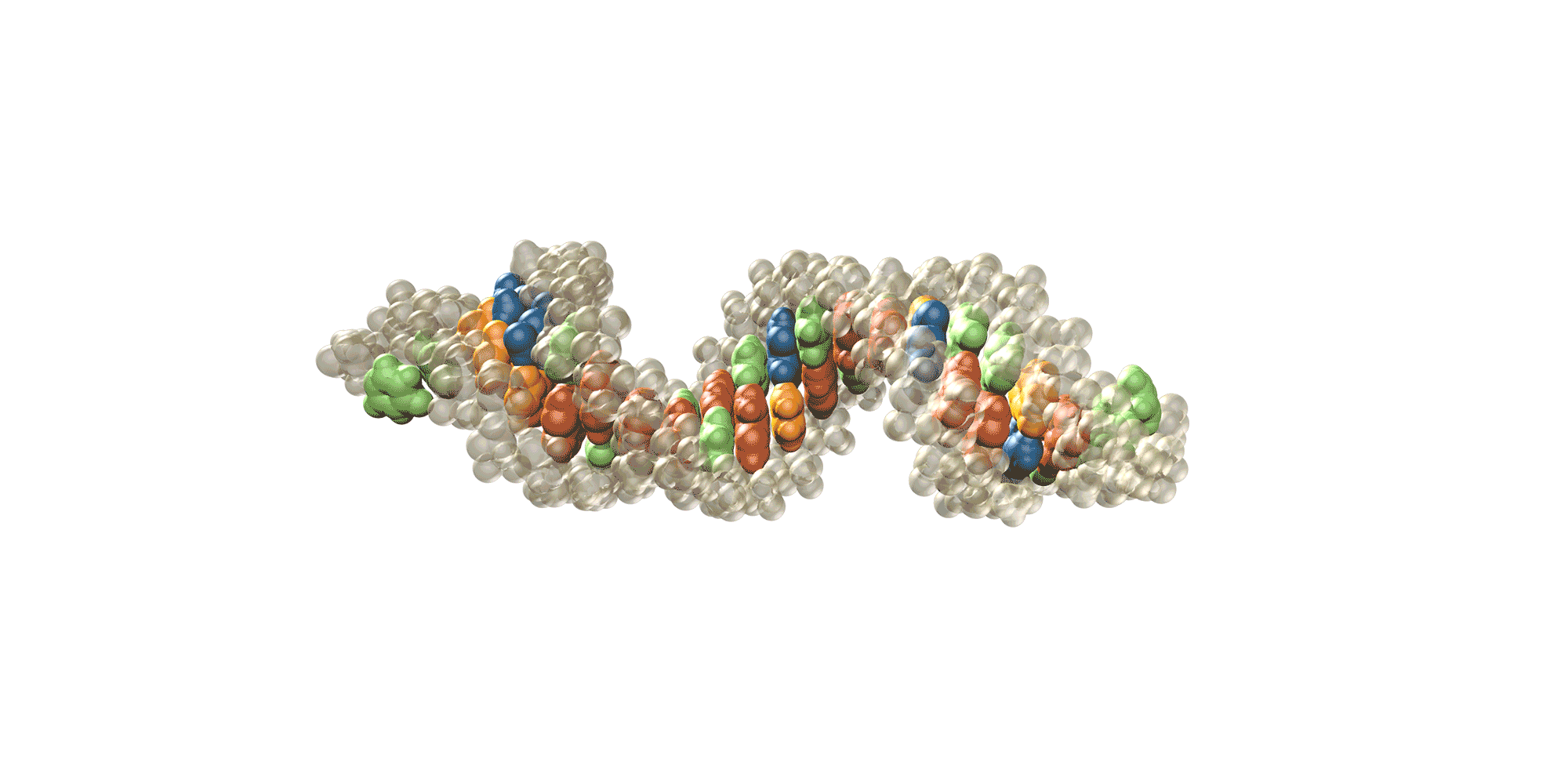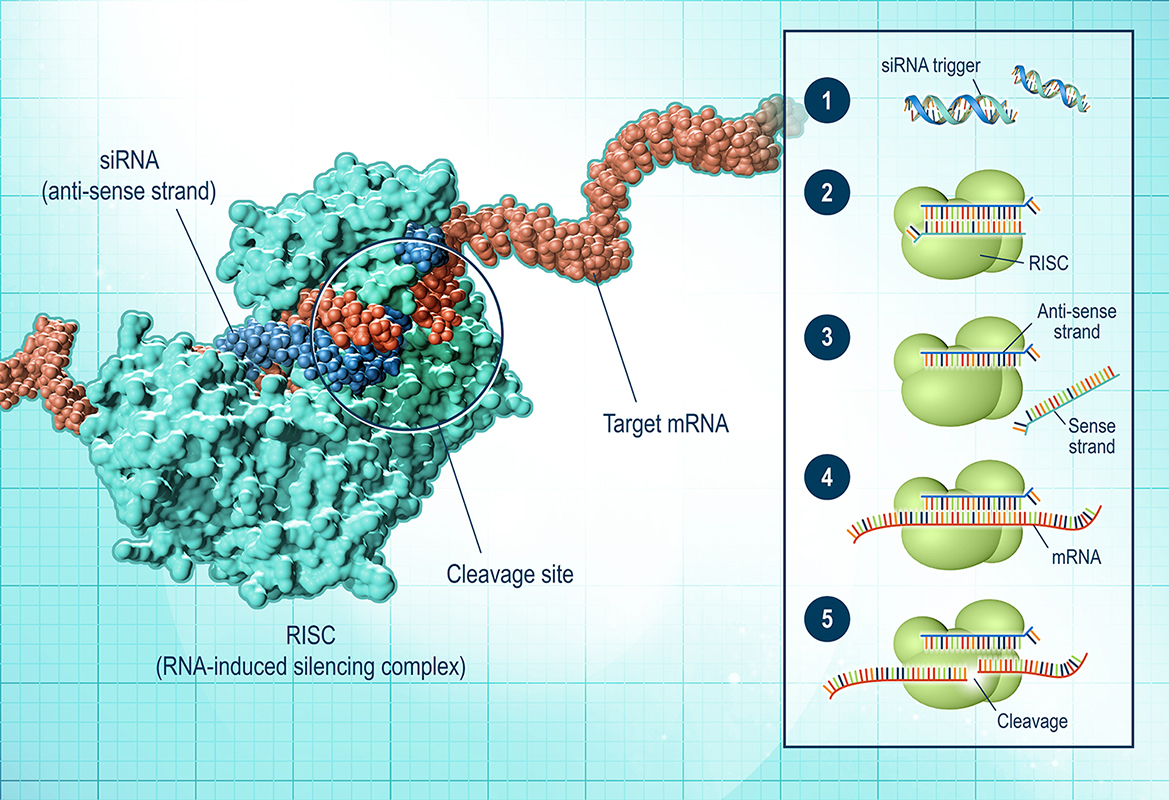
Most medicines work by binding to proteins involved in disease and altering their activity. RNA interference (RNAi) is a technology that works by preventing cells from making a specific protein that contributes to disease. Also known as gene silencing, this technology is based on natural processes cells use to regulate protein expression.
The most common form of RNAi employs small interfering RNAs (siRNAs). These double-stranded RNAs are usually 21 nucleotides in length. Once inside the cell, the siRNA fragments are processed by a multi-protein machine and paired with a complementary strand of messenger RNA (see Blueprint). The messenger RNA is then degraded, preventing production of the protein it encodes. Therapeutic siRNAs have a sequence that is highly specific for the messenger RNA of its target protein. siRNA has the potential to silence proteins that are difficult to engage through other modalities.

Most of the RNA interference programs in development are based on small interfering RNAs, or siRNAs (1). Once inside the cell, the siRNA “trigger” binds to a protein called Argonaute, which forms one part of a multi-protein machine known as a RNA-induced silencing complex, or RISC (2). Once it is loaded into a RISC, the double-stranded RNA is unwound, leaving the anti-sense strand bound in the complex (3). The anti-sense strand then binds to the targeted messenger RNA (4) which is then cleaved (5), preventing protein production.



